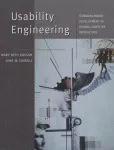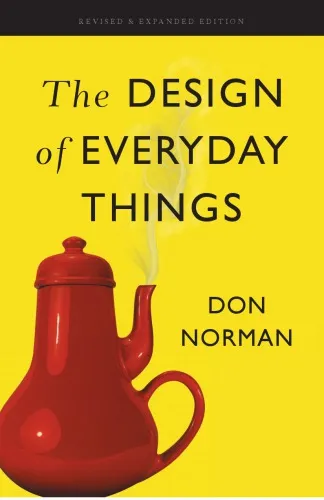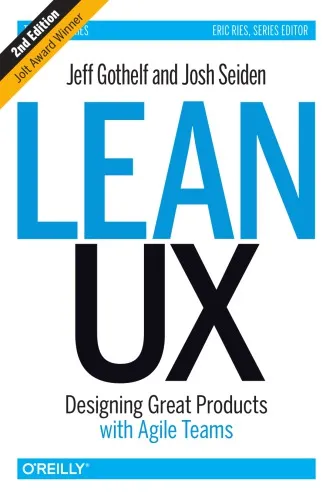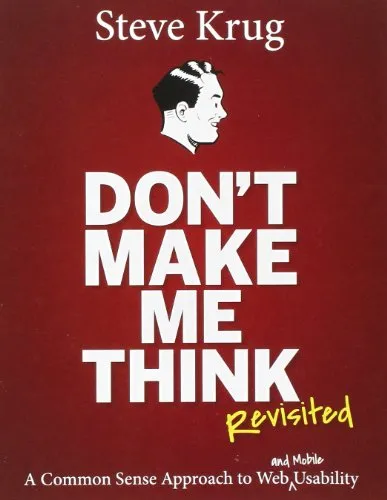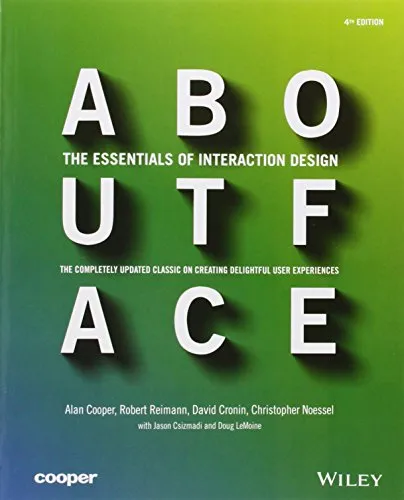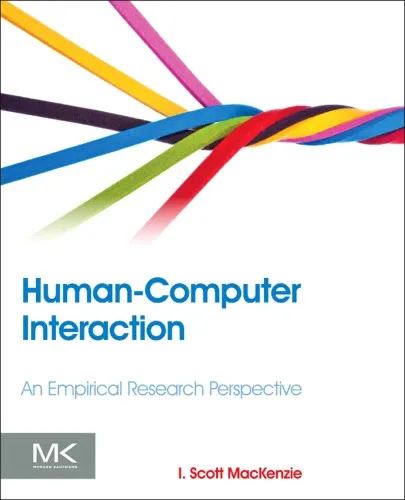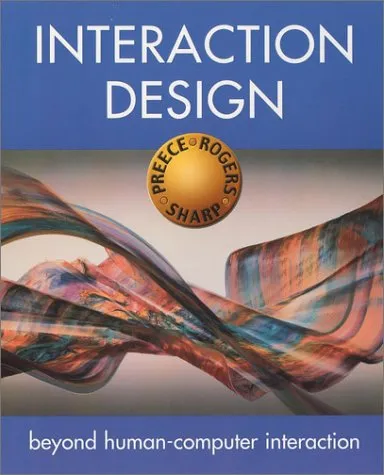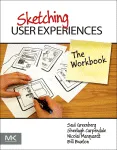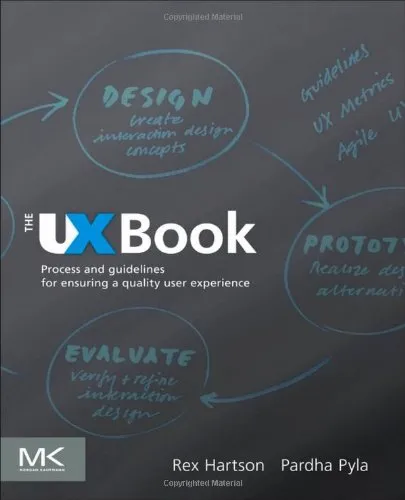Usability Engineering. Scenario-Based Development of Human-Computer Interaction
3.3
بر اساس نظر کاربران

شما میتونید سوالاتتون در باره کتاب رو از هوش مصنوعیش بعد از ورود بپرسید
هر دانلود یا پرسش از هوش مصنوعی 2 امتیاز لازم دارد، برای بدست آوردن امتیاز رایگان، به صفحه ی راهنمای امتیازات سر بزنید و یک سری کار ارزشمند انجام بدینکتاب های مرتبط:
Persian Summary
مقدمهای بر کتاب 'Usability Engineering. Scenario-Based Development of Human-Computer Interaction'
کتاب 'Usability Engineering. Scenario-Based Development of Human-Computer Interaction' نوشته مری بث روسون و جان ام. کارول از جمله منابع مهم و جامع در زمینه طراحی و توسعه تعامل انسان-کامپیوتر (HCI) است. این کتاب با تمرکز بر استفاده از سناریوها به عنوان ابزار کلیدی در طراحی، سعی دارد خوانندگان را با روشهای کارآمد و مناسب برای بهبود User Experience آشنا کند.
خلاصهای مفصل از کتاب
این کتاب بر اهمیت Usability در دنیای امروزی فناوری تأکید دارد، جایی که تعامل مؤثر و کاربرپسند با سیستمهای نرمافزاری نه تنها نیاز، بلکه ضرورتی غیرقابلانکار است. نویسندگان با ارائه تعاریف و مفاهیم اولیه Usability Engineering، به معرفی تکنیکهای نوینی میپردازند که از سناریوها برای مدلسازی و بهبود سیستمهای تعاملی استفاده میکنند.
در ادامه، کتاب به بررسی چگونگی ایجاد و استفاده از سناریوها در فرآیند طراحی Usability به صورت دقیق میپردازد. این سناریوها که به عنوان داستانهای کاربران در نظر گرفته میشوند، به طراحان کمک میکنند تا تجربیات کاربران واقعی را درک کنند و محصولات کاربرمحورتر توسعه دهند. نویسندگان روشهایی همچون طراحی سناریو محور و تحلیل نیاز کاربران را جهت اجرای پروژههای موفق معرفی میکنند.
نکات کلیدی
- تأکید بر اهمیت درک عمیق از نیازهای کاربران واقعی در طراحی سیستمهای تعاملی.
- استفاده از سناریوها به عنوان ابزار کلیدی برای مدلسازی تجربه کاربر و طراحی تعامل مؤثر.
- ارائه گامبهگام تکنیکهای ارزیابی Usability و بهبود مداوم سیستمهای طراحی شده.
- تحلیل و بررسی مثالهای واقعی از پروژههای موفق و نحوه بهکارگیری اصول Usability در آنها.
جملات معروف از کتاب
"سناریوها ابزاری هستند که نه تنها تفکر طراحی را فعال میکنند بلکه به عنوان پُل ارتباطی میان تیمهای مختلف توسعه عمل میکنند."
"مفهوم Usability فراتر از طراحی ساده است، این مفهوم تضمین میکند که تعاملات کاربر با سیستمها نه تنها ممکن بلکه لذت بخش باشند."
چرا این کتاب مهم است
اهمیت این کتاب به دلیل تمرکز منحصر به فرد آن بر طراحی کاربردپذیری از طریق رویکرد سناریو محور است. این رویکرد به طراحان و توسعهدهندگان امکان میدهد تا درک عمیقتری از چگونگی استفاده کاربران از محصولات و خدمات دیجیتال کسب کنند. با فراگیر شدن محصولات دیجیتال در جنبههای مختلف زندگی روزمره، توانایی خلق تجربیات کاربری فوقالعاده و کارآمد به یک مزیت رقابتی مهم تبدیل شده است. این کتاب، راهنمای جامعی برای طراحان است تا با استفاده از بهترین شیوهها و ابزارها، به این هدف دست یابند.
Introduction
Welcome to "Usability Engineering: Scenario-Based Development of Human-Computer Interaction" by Mary Beth Rosson and John M. Carroll, a comprehensive guide tailored for both budding and seasoned professionals interested in the dynamic field of usability engineering. This book articulates the profound methodology of scenario-based design, providing readers with insights into crafting user-centered, interactive systems that are effective and intuitive. As technology continues to evolve at a rapid pace, understanding the principles of human-computer interaction becomes imperative for designing functional and accessible digital environments.
Detailed Summary of the Book
The book is structured to take readers through a meticulously designed journey of usability engineering, focusing primarily on a scenario-based approach. The authors, with their extensive experience, unravel the intricacies of this methodology by emphasizing how scenarios can guide the creation and evaluation of interactive systems. Each chapter builds on the previous, ensuring a comprehensive grasp of scenario-oriented usability practices.
The initial chapters introduce the concept of scenarios in design, setting the stage for their importance in the usability engineering process. Readers learn how scenarios serve not only as a storytelling tool but also as a powerful framework for identifying user needs, behaviors, and expectations. The book then delves into the development and validation of these scenarios, providing detailed examples, exercises, and case studies that illustrate their application in real-world contexts.
As the chapters progress, the book explores the integration of scenario-based design into the broader usability engineering process. It discusses how scenarios can influence interface design, prototyping, and the iterative development process. The authors also bridge the gap between theoretical perspectives and practical applications, making it accessible for readers to implement these concepts in their own projects.
Key Takeaways
- Understanding of the core principles of scenario-based design and its relevance in usability engineering.
- Ability to create and apply scenarios to enhance user-centered design processes.
- Insight into the role of user feedback and iterative testing in developing effective human-computer interactions.
- A comprehensive view of integrating narrative scenarios into design and evaluation stages.
Famous Quotes from the Book
"Scenarios help us envision the future, shaping how we design the technology that fits seamlessly into our lives."
"Design is as much about understanding people and their needs as it is about creating technology."
Why This Book Matters
In a world where technology rapidly evolves and permeates every aspect of daily life, the demand for intuitive, user-friendly interfaces has never been greater. "Usability Engineering: Scenario-Based Development of Human-Computer Interaction" stands out as an essential resource for designers, developers, and usability practitioners seeking to enhance their understanding of user-centered design strategies. The book's emphasis on scenario-based design provides a unique lens through which to address the challenges of creating digital products that are as efficient as they are engaging.
By providing a structured methodology grounded in both theory and practice, this book helps bridge the gap between academic research and industry application. It encourages readers to think critically about how people interact with technology, fostering a design philosophy that prioritizes usability and user satisfaction. Moreover, Rosson and Carroll's work underscores the importance of continuous learning and adaptation, key principles for thriving in the ever-evolving domain of human-computer interaction.
دانلود رایگان مستقیم
شما میتونید سوالاتتون در باره کتاب رو از هوش مصنوعیش بعد از ورود بپرسید
دسترسی به کتابها از طریق پلتفرمهای قانونی و کتابخانههای عمومی نه تنها از حقوق نویسندگان و ناشران حمایت میکند، بلکه به پایداری فرهنگ کتابخوانی نیز کمک میرساند. پیش از دانلود، لحظهای به بررسی این گزینهها فکر کنید.
این کتاب رو در پلتفرم های دیگه ببینید
WorldCat به شما کمک میکنه تا کتاب ها رو در کتابخانه های سراسر دنیا پیدا کنید
امتیازها، نظرات تخصصی و صحبت ها درباره کتاب را در Goodreads ببینید
کتابهای کمیاب یا دست دوم را در AbeBooks پیدا کنید و بخرید
1676
بازدید3.3
امتیاز0
نظر98%
رضایتنظرات:
3.3
بر اساس 0 نظر کاربران
Questions & Answers
Ask questions about this book or help others by answering
No questions yet. Be the first to ask!
